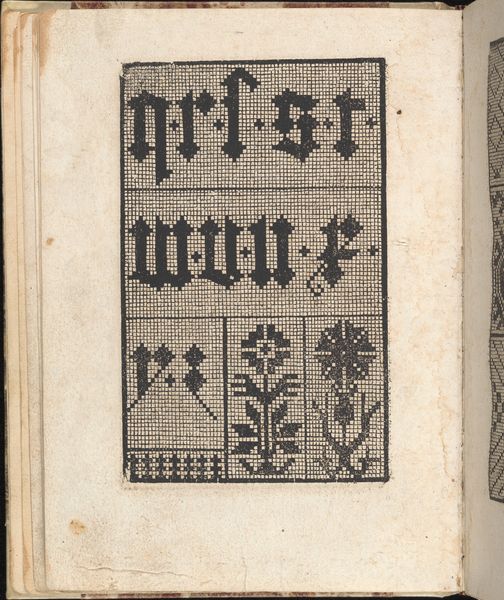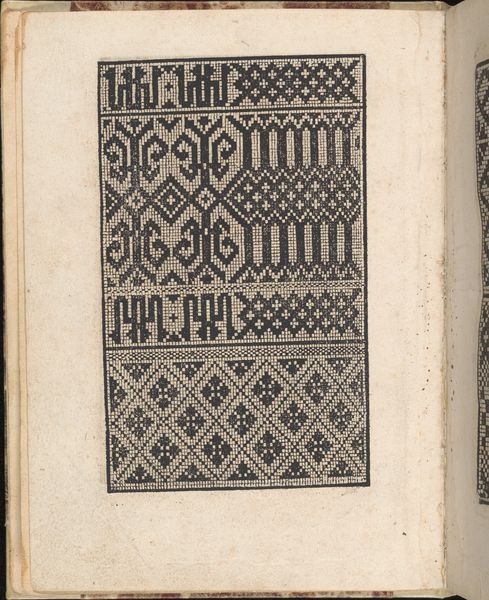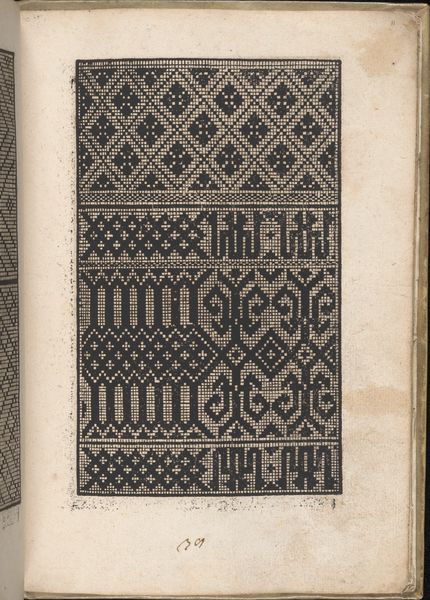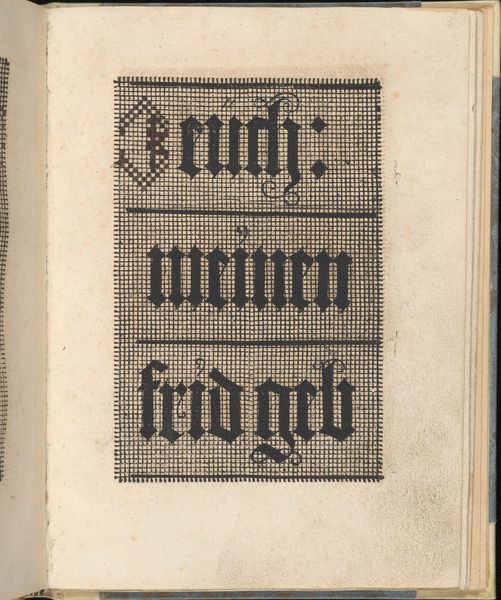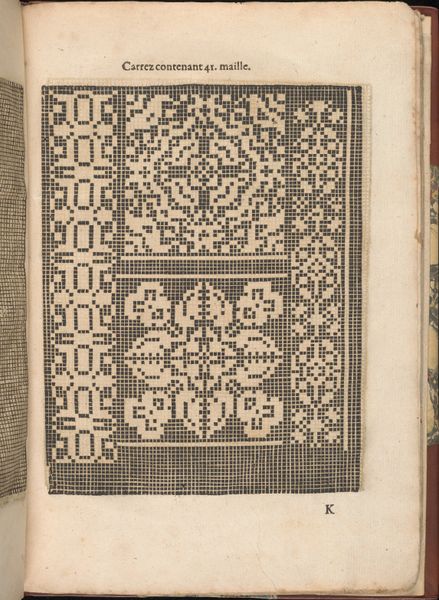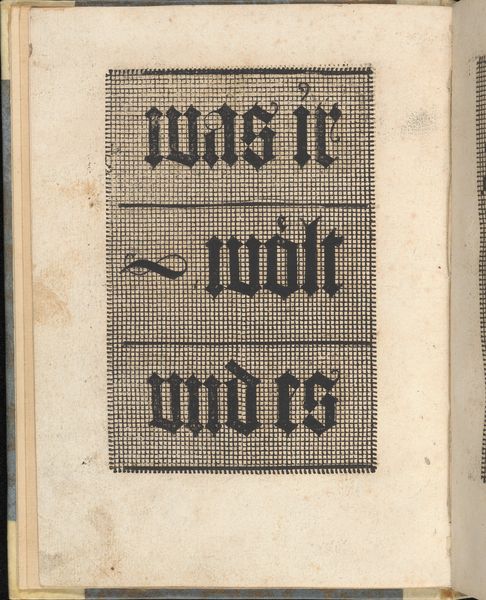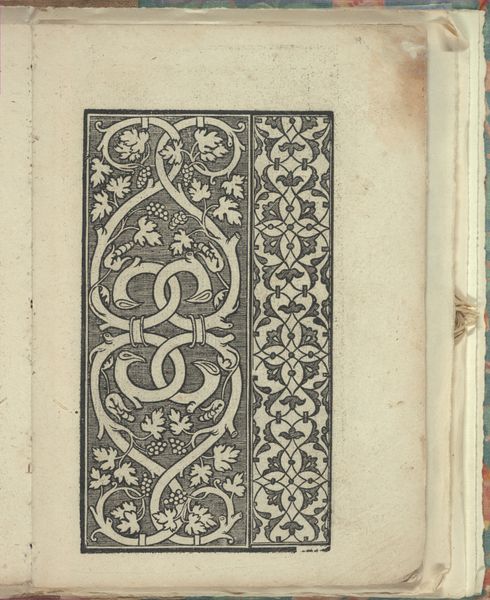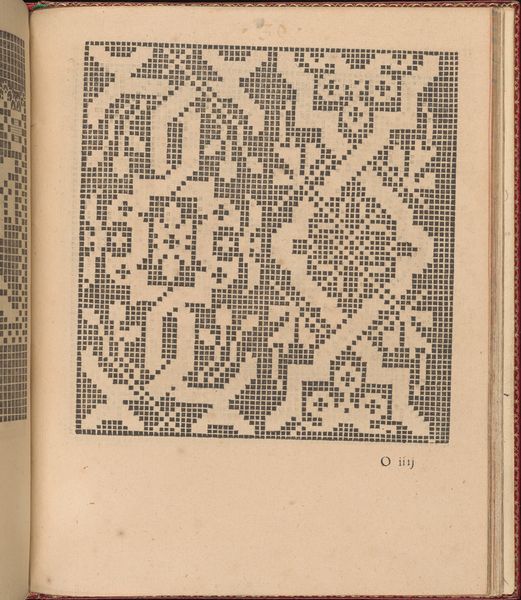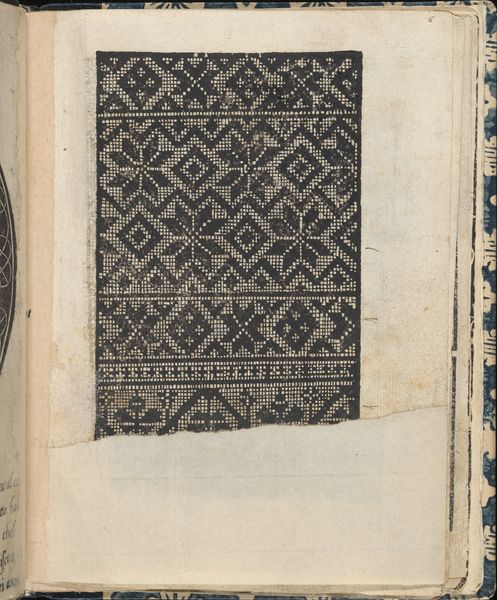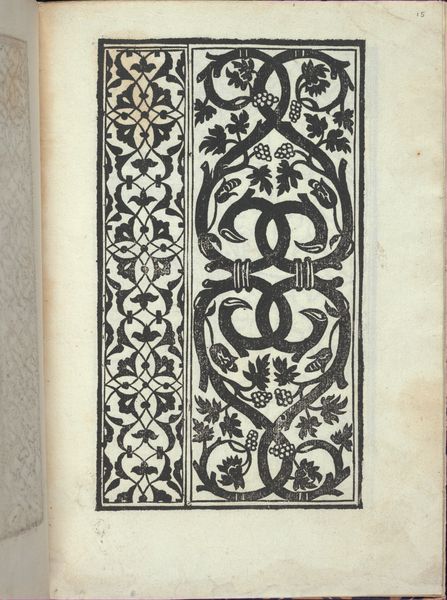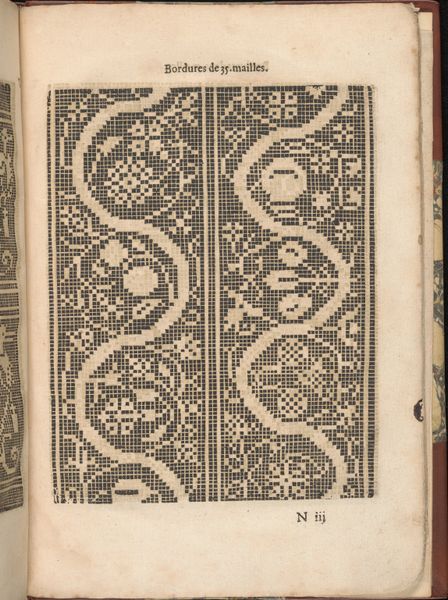
Ce est ung tractat de la noble art de leguille ascavoir ouvraiges de spaigne... page 7 (verso) 1527 - 1540
0:00
0:00
drawing, ornament, print, textile, paper, woodcut
#
drawing
#
ornament
# print
#
textile
#
paper
#
11_renaissance
#
woodcut
Dimensions: Overall: 6 7/8 x 5 11/16 in. (17.5 x 14.5 cm)
Copyright: Public Domain
Curator: Here we have a page, specifically page 7 verso, from "Ce est ung tractat de la noble art de leguille ascavoir ouvraiges de spaigne...", a book dating from between 1527 and 1540 by Willem Vosterman. The work is currently held at The Metropolitan Museum of Art. It’s a woodcut print on paper. Editor: It strikes me as utterly charming, in a stark way. The black-on-cream, grid-like background almost overwhelms the lettering and designs, making it feel like a secret code waiting to be deciphered. Like a vintage 8-bit videogame visual. Curator: Yes, the use of black and white is particularly effective in creating contrast and highlighting the intricate designs. Notice the compartmentalization. The three distinct blocks. The letterforms appear almost architectural, quite imposing in their structure. This reflects Vosterman's keen eye for detail and design principles rooted in order and clarity. Editor: And yet, within those strict lines, there’s a playfulness. Those floral motifs at the bottom feel very free and organic compared to the rigid grid and those severe Gothic letterforms. A kind of controlled whimsy. I imagine the patterns offered inspiration for embroidery samplers, didn't they? Curator: Precisely. These prints served a didactic purpose, as patterns and models. "Ce est ung tractat..." provided templates for textile workers; thus, its structure allows the needleworker to scale the patterns as required. But the design also demonstrates the fusion of practicality and the decorative arts during the Renaissance, showing us the significance of textile design in broader artistic expression. Editor: So, it's a how-to manual elevated to art, something functional becoming beautiful, a quiet conversation across centuries about craft and intention. It gives you a certain sense of comfort that we keep coming back to making. Curator: An astute observation. I’m left reflecting on the intersection of craft and art, and how something ostensibly functional can transcend its utility and achieve enduring aesthetic value. Editor: And I’m dreaming of cross-stitch patterns and the gentle rhythm of needle and thread. How such a simple image can ignite such a tangible sense of nostalgia!
Comments
No comments
Be the first to comment and join the conversation on the ultimate creative platform.
